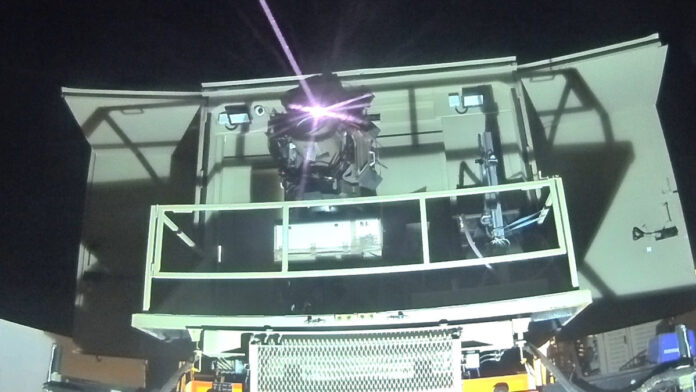In a significant advancement for Israel’s defense capabilities, the Iron Beam laser interception system is set to enter operational service within the next year, according to Eyal Zamir, the director general of Israel’s Defense Ministry. This announcement came during the signing of a substantial NIS 2 billion ($535 million) contract between the ministry and the defense contractors Rafael and Elbit Systems.
The Iron Beam, which is still under development, is part of Israel’s layered missile defense strategy. It is specifically designed to complement existing systems like the Iron Dome by targeting and neutralizing smaller, short-range threats such as drones, mortars, and rockets. This high-powered laser technology promises a cost-effective solution for intercepting threats, as it uses significantly less expensive ammunition compared to traditional missile interceptors.
Eyal Zamir highlighted the strategic importance of this project, stating, “The first capability of the ground laser system… is expected to enter operational service in a year from today.” The contract’s objective is to ramp up production to meet the operational timeline, ensuring that the defense forces are equipped with this advanced technology at the earliest.
The agreement not only underscores the commitment to enhancing Israel’s aerial defense but also signifies a major leap in military technology, potentially setting a new standard in defense against evolving aerial threats. The collaboration between Rafael and Elbit Systems, two of Israel’s leading defense technology companies, is expected to “significantly increase” production rates to deliver the laser systems promptly and efficiently.
This development marks a pivotal moment in modern warfare, where advanced laser technology could redefine the dynamics of defense against aerial attacks, offering a glimpse into the future of military technology.
Key Points:
Operational Timeline: The Iron Beam, Israel’s high-powered laser interception system, is expected to be fully operational by the end of 2025. It’s designed to work in tandem with the Iron Dome, enhancing Israel’s aerial defense capabilities.
- Cost Efficiency: Each interception by the Iron Beam is estimated to cost up to $1,000, significantly lower than the $40,000 to $50,000 per interception with the Iron Dome’s Tamir missiles. This cost efficiency makes it a more sustainable defense option against frequent aerial threats.
- Technological Specifications: The system uses a 100-kilowatt-class High Energy Laser Weapon System (HELWS), capable of neutralizing threats from a few hundred meters up to several kilometers away. It operates at nearly zero cost per interception after initial setup, due to its use of laser technology over traditional missile interceptors.
- Strategic Importance: The deployment of Iron Beam is seen as a critical step in modernizing Israel’s defense against drones, rockets, and missiles, especially in light of recent conflicts like the 2023 Israel-Hamas war, where such systems could provide a near-instantaneous response to threats.
- Integration and Expansion: There are plans to integrate Iron Beam with the Iron Dome for a coordinated defense mechanism. Additionally, a naval version of Iron Beam is under development for deployment on Israeli Navy vessels, broadening its application from land to sea.
- Funding and International Collaboration: The U.S. has committed $1.2 billion to support Israel in procuring the Iron Beam, highlighting international interest and collaboration in developing and deploying this technology. This aid underscores the strategic partnership and mutual interest in advanced defense technologies.
- Real-World Testing: The system has been deployed for operational tests near the Gaza Strip, aiming to evaluate its effectiveness in real combat scenarios against rocket barrages, which could provide valuable data for further refinements.
- Limitations and Future Developments: While highly effective, the Iron Beam has limitations like weather dependency and range. However, ongoing developments aim to increase its power output and range, with potential upgrades to handle multiple threats simultaneously.
- Environmental and Safety Benefits: Unlike traditional missile systems, Iron Beam does not produce shrapnel, reducing collateral damage and environmental impact during interceptions.



